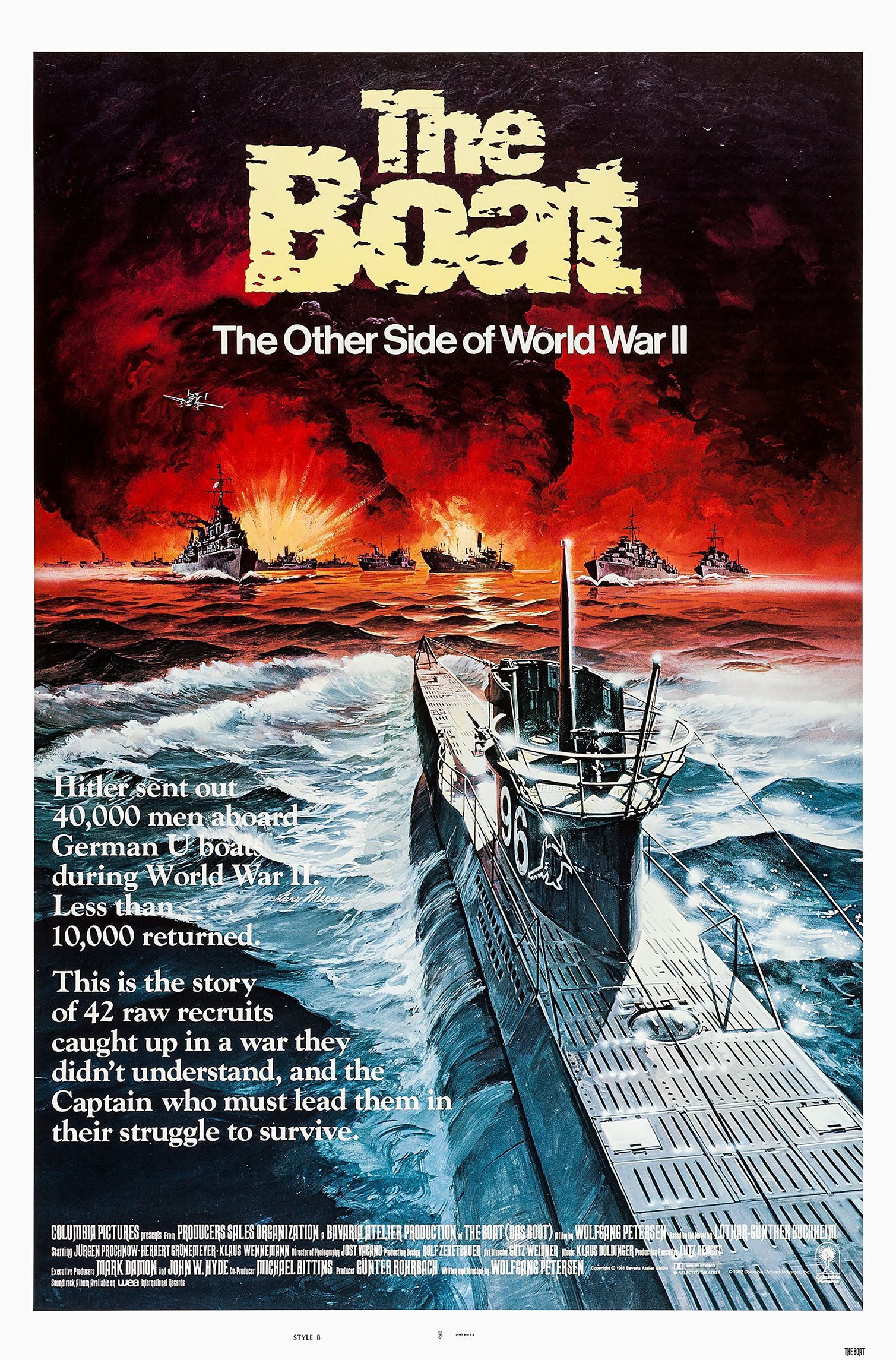War is brutal, exhausting, and, more often than not, meaningless. That’s one key message that Wolfgang Petersen’s 1981 World War II picture Das Boot puts across more powerfully than most war movies. But how brilliantly Petersen crafts Das Boot to communicate this message makes the film stand apart in the crowded sea of submarine war movies. Unlike the good company it keeps in movies like The Enemy Below, which personalizes the war to pit Robert Mitchum‘s British commander Captain Murrell against his German adversary Kapitän von Stolberg (Curd Jürgens), and U-571, which sacrifices accuracy for action-hero theatrics, Das Boot impresses with its uniqueness—no hero, no melodrama, no soaring music when a torpedo hits its mark, no patriotic speeches about honor and duty. What the movie does, however, is offer a gripping experience of human beings—men, young and old—who could be of any nationality, even though we know they are Germans, fighting a war they didn’t ask for. Throughout the film’s runtime, Petersen makes us live alongside this crew. Simply put, Das Boot is the submarine war movie.
What Is ‘Das Boot’ About and How Many Versions Are There?
Apart from a few scenes at the beginning and end that provide essential exposition, Das Boot mostly locks you inside the claustrophobic steel belly of a German U-boat. Led by Captain Lehmann-Willenbrock (Jürgen Prochnow), the crew patrols the Atlantic in search of Allied naval vessels, shifting between hunter and hunted. Initially, the youthful crew is excited at the prospect of becoming war heroes, something that the film warns about early on. “They will know in time,” Captain Thomsen (Otto Sander), a reluctant war hero who is disillusioned with the Nazis, says of the young soldiers’ naiveté in the opening sequence. Sure enough, they soon learn that their journey won’t end in glory—only survival, if they’re lucky. Petersen’s camera snakes through the cramped spaces of the submarine’s impossibly narrow corridors to offer a visceral take on what combat beneath the waves is like. He captures not just the combat of war in the sea, but also the humanity of the crew without asking us to sympathize with their cause, compelling us to see the crew as ordinary people who are frightened, hopeful, and real.
One of Das Boot‘s fascinating quirks is its many versions. There is the original 1981 theatrical cut that runs for 149 minutes, winning over audiences and critics, and earning six Academy Award nominations, an exceptional achievement for a foreign-language film. This version is the shortest and the most condensed of the available cuts. In 1997, Petersen released the director’s cut, with an extended runtime that hits 209 minutes. Compared to the theatrical release, this version gives the story depth with its enhanced character development due to more moments spent with characters interacting with them during battles and quiet sessions in-between. Still, there is a six-hour television miniseries that, when pieced together without the credits in between, clocks in at a staggering 293 minutes. This expanded cut encompasses scenes depicting the crew’s camaraderie, fears, backstories, and their slow unraveling.
‘Das Boot’s Suspense Is So Relentless It’s Almost Unbearable
The crew in Das Boot face three relentless problems: the cramped space of the U-96, the unforgiving sea, and the human enemy waiting to destroy them. Petersen shows that the crew has adapted to the cramped quarters, squeezing past one another through the U-boat’s narrow compartments. However, Das Boot uses this to create suspense as the crew deals with their other two problems. Petersen places us alongside them in this confined space, accompanying them in what seems like endless waiting. When a crew member urgently moves from one compartment of the U-boat to the other across a tunnel, he follows him and lets us feel his anticipation and growing desperation as the sea attempts to engulf them by crushing their U-96 with unbearable pressure. If you are watching the film after 2023, it’s hard not to think of the tragic Titan submersible disaster. Although Petersen tells the story of a crew dedicated to its mission and the challenges they face, which he succeeds in exceptionally, he also snaps individual moments of hardship, such as a crew member who almost gets swept away by the roaring seawater when he falls overboard. Petersen’s masterful direction utilizes immersive sight and sound to make you sit among the crew in their deafening silence and listen to the sonar pings as they grow louder while destroyers lurk just above them. He invites us to appreciate cinema in its wholesomeness.
Cinematographer Jost Vacano outdid himself with his handheld camera that sweeps through the tight spaces of the U-96, capturing the emotional bond between the crew and the teamwork needed to run a U-boat. The film’s use of consultants Heinrich Lehmann-Willenbrock, the captain of the real U-96, and Hans-Joachim Krug, an officer on U-219, defines the film’s ambition for authenticity. Its 98% score on Rotten Tomatoes is for a good reason, because Das Boot is not just the greatest submarine war movie ever made; it might be the greatest war film, period.




















